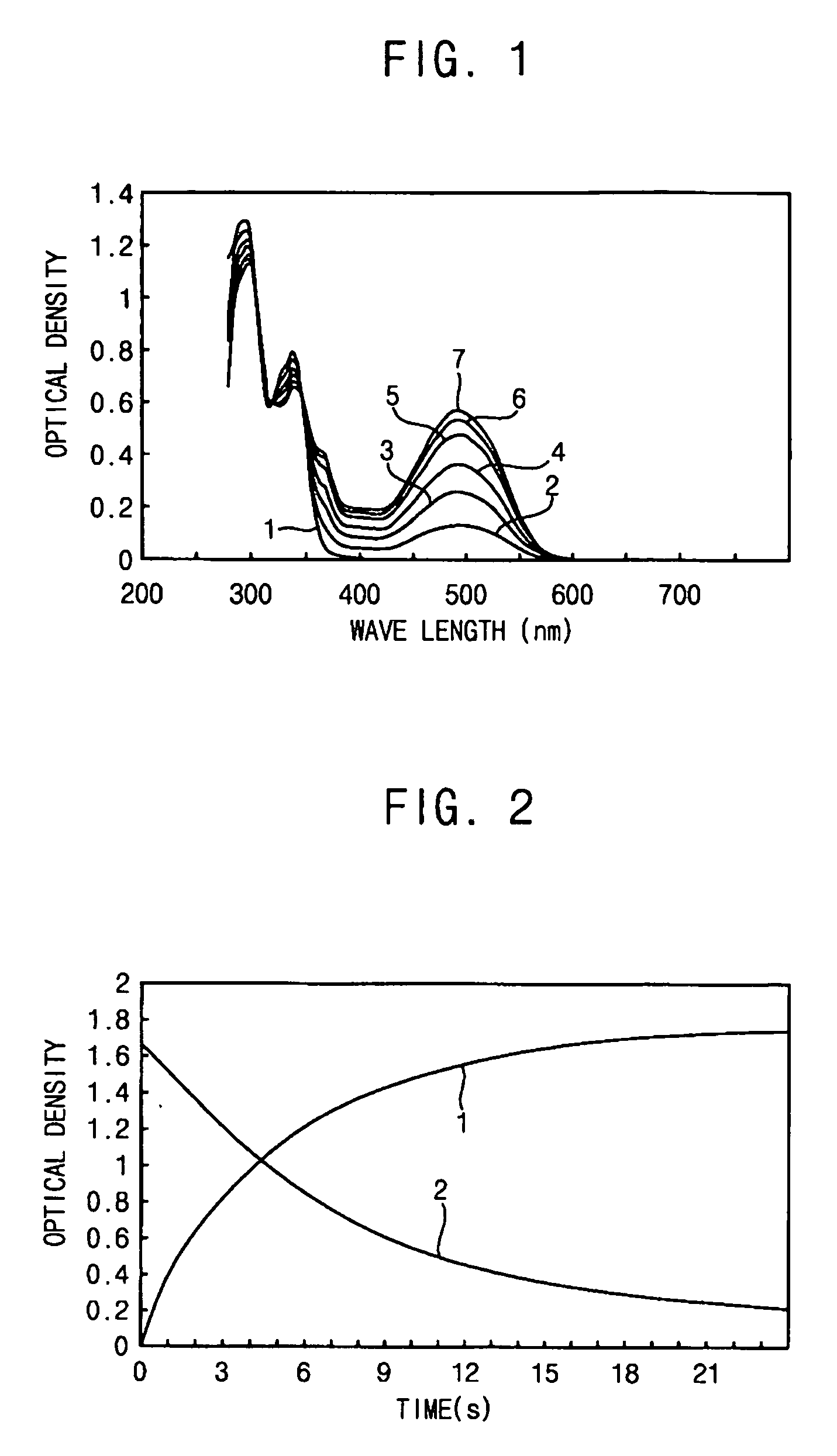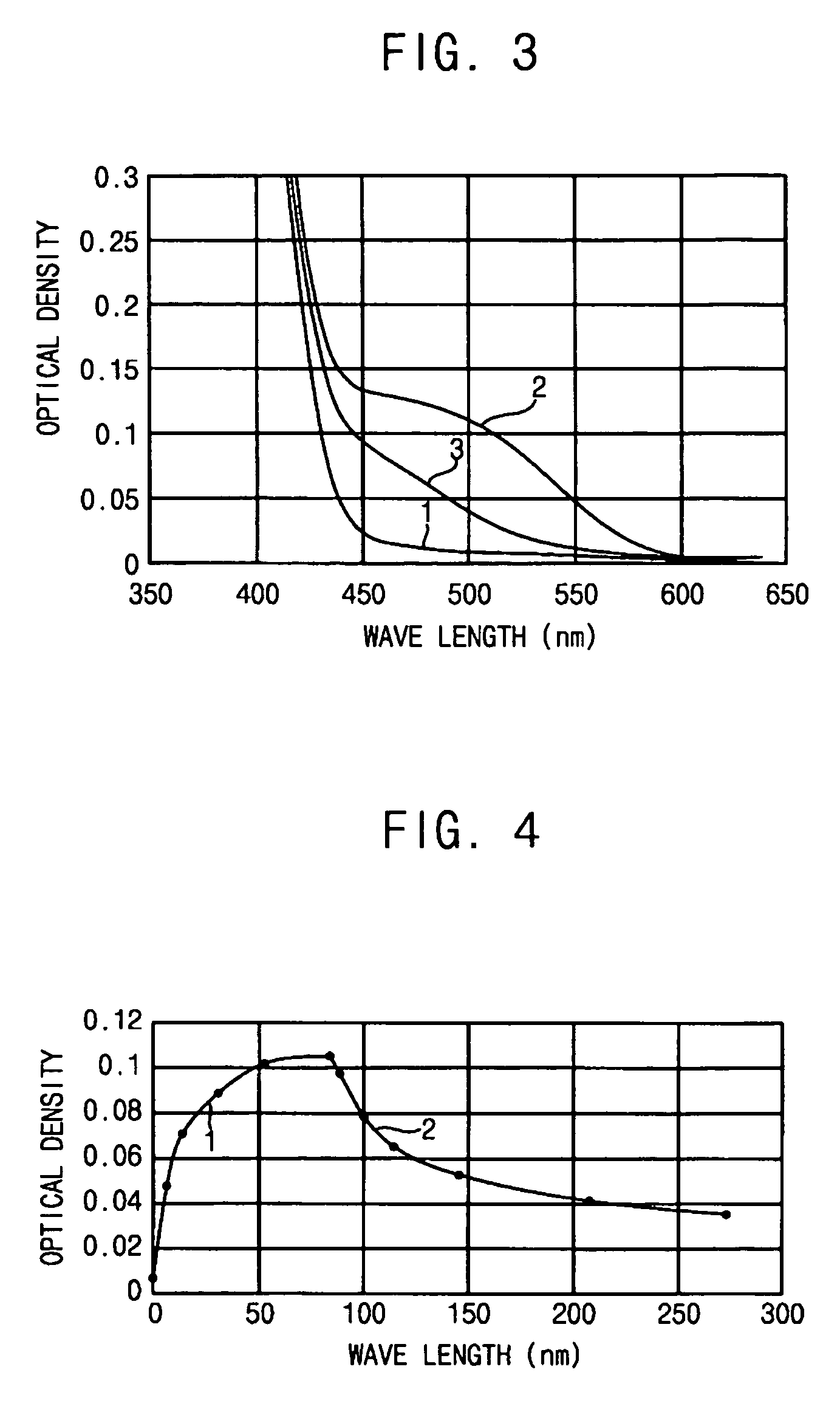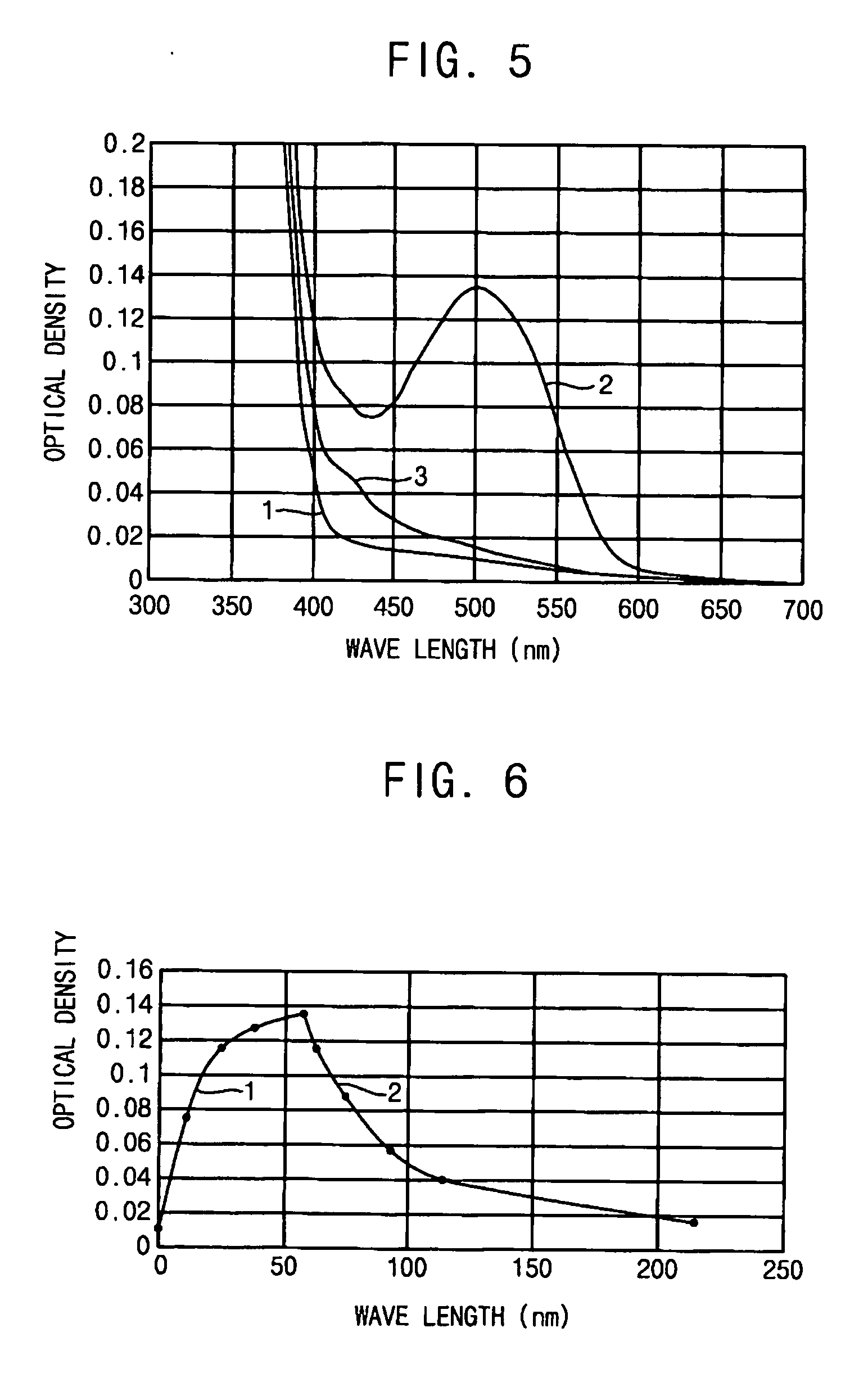Photocontrolled photochromic electroluminescent and electroconductive polymers for photonics
a photochromic electroluminescent and photochromic polymer technology, applied in the field of new photochromic monomers and new photochromic polymers, can solve the problems of uncontrolled electroluminescence and electroconductivity of light-sensitive devices, and achieve the effect of expanding functional possibilities
- Summary
- Abstract
- Description
- Claims
- Application Information
AI Technical Summary
Benefits of technology
Problems solved by technology
Method used
Image
Examples
example 1
[0034] Photochromic monomers 1,2-bis(2-methyl-6-formyl-1-benzothiophen-3-yl) cyclopentenes 5a-e from the class of photochromic monomers that comprise benzothiophene fragments linked by a cyclopentene bridge were synthesized using benzothiophenes 2a-e according to the reaction presented in Equation 2.
[0035] The initial benzothiophenes 2a-e were obtained according to the following methods. 2-methylbenzothiophene (2a) was prepared according to “Synthesis of sulfides, thiophenes and thiols of the type of compounds encountered in oil,” edited by E. N. Karaulova, Pub. “Nauka,” 1988, p. 180 which is incorporated by reference. 2,4-dimethylbenzothiophene and 2,7-dimethylbenzothiophene (2b, 2c were prepared according to Monatsh. Chem. 1960, 91, 1070, which is incorporated by reference. 2,4-dimethylbenzothiophene and 2,6-dimethylbenzothiophene (2d, 2e) were prepared according to J.Chem.Soc., Chem.Com. 1974, 5, 174, which is incorporated by reference.
[0036] The synthesis of 1,2-bis(2-methyl-6...
example 2
[0055] The synthesis of polyazomethine (Compound III) was carried out according to Equation 3 using 1,2-bis(2-methyl-6-formyl-1-benzothiophen-3-yl) cyclopentene (Compound I) and benzidine. 0.25 g (0.6 mmole) of 1,2-bis(2-methyl-6-formyl-1-benzothiophen-3-yl)cyclopentene (Compound I), 0.110 g (0.6 mmole) of benzidine (Compound II), 1 mL each of N-methylpyrrolidone, hexamethyl phosphoramide and 0.047 g of dry LiCl were placed in a three-necked flask with a capacity of 25 mL, provided with a stirrer, reflux condenser and inlet for argon. The solution was stirred for 16 hours at room temperature and then the reaction mixture was poured into methanol. The resulting residue was washed with water, washed with methanol, and the polymer was dried under vacuum for 24 hours at 60° C.
[0056] The yield of the polymer (Compound III) was about 97%. IRS (KBr, cm−1): C═N 1680. Mn=35000. The polymer is soluble in chloroform, THF, when heated in dimethylformamide (DMFA) and toluene, and is insoluble ...
example 3
[0058] Polyazomethine IIIa of Structural Formula 6 was obtained from the photochromic monomer of Structural Formula 1 and 3,3′-diaminodiphenyl in a manner similar to Example 2. The yield was 92%. Mn=28000. The polymer is soluble in chloroform, tetrahydrofuran, dimethylformamide, and toluene, and is not soluble in ethanol and acetone.
[0059] The spectral-kinetic characteristics, measured by the method described in Example 1 on a sample of a photochromic polymer prepared according to the method presented in Example 2, show a virtually acceptable photochromism of this polymer.
PUM
| Property | Measurement | Unit |
|---|---|---|
| Temperature | aaaaa | aaaaa |
| Temperature | aaaaa | aaaaa |
| Electrical conductor | aaaaa | aaaaa |
Abstract
Description
Claims
Application Information
 Login to View More
Login to View More - R&D
- Intellectual Property
- Life Sciences
- Materials
- Tech Scout
- Unparalleled Data Quality
- Higher Quality Content
- 60% Fewer Hallucinations
Browse by: Latest US Patents, China's latest patents, Technical Efficacy Thesaurus, Application Domain, Technology Topic, Popular Technical Reports.
© 2025 PatSnap. All rights reserved.Legal|Privacy policy|Modern Slavery Act Transparency Statement|Sitemap|About US| Contact US: help@patsnap.com



